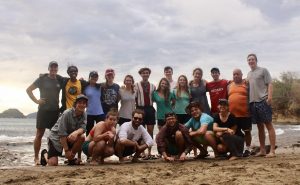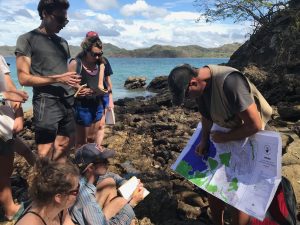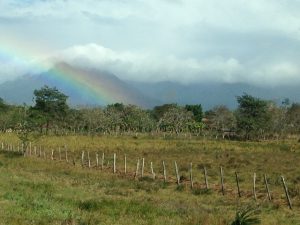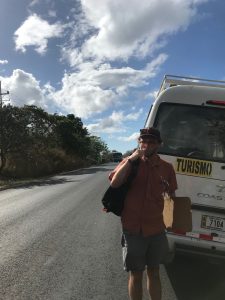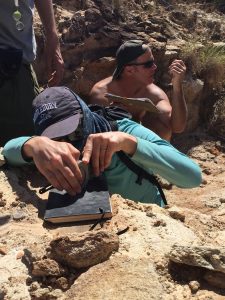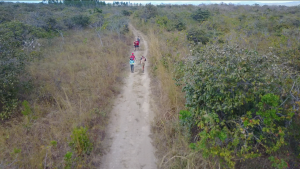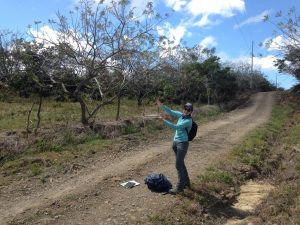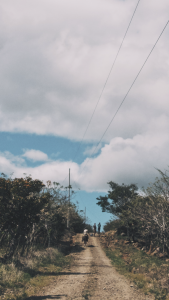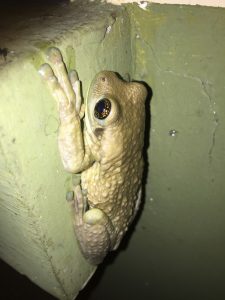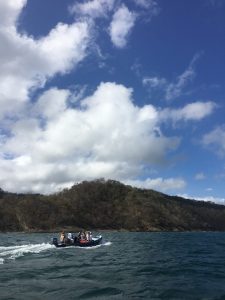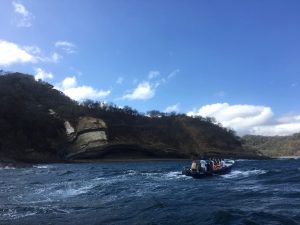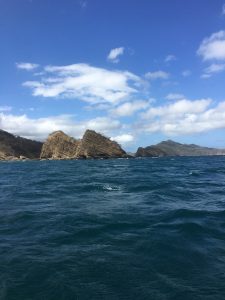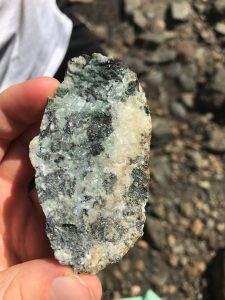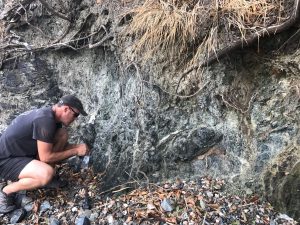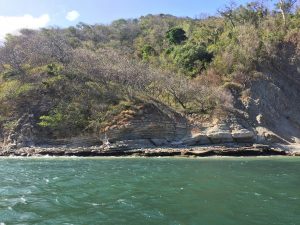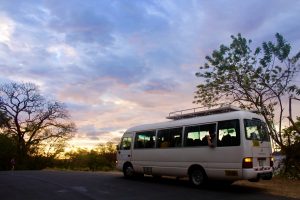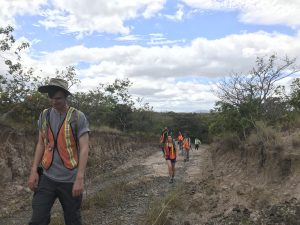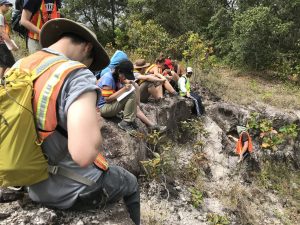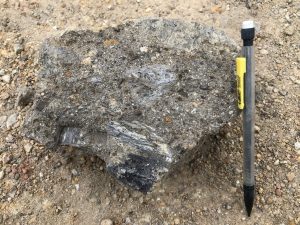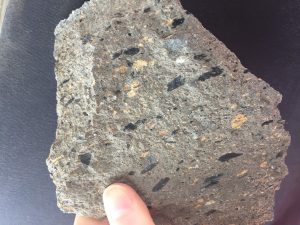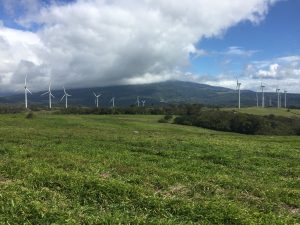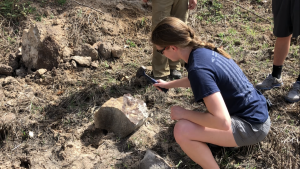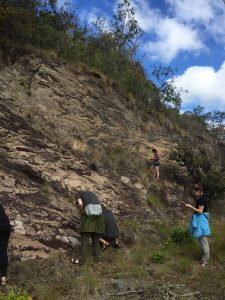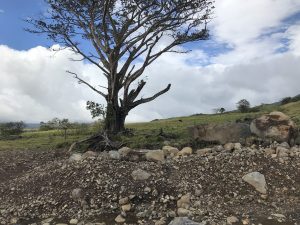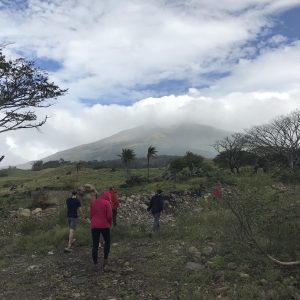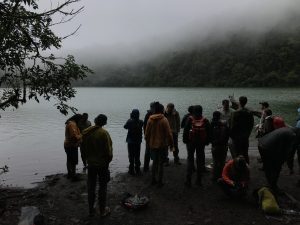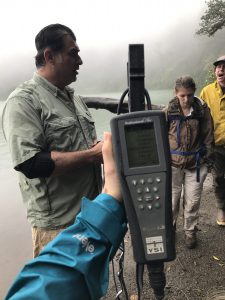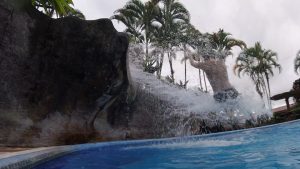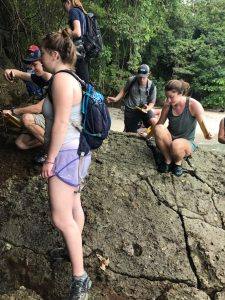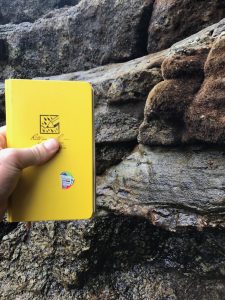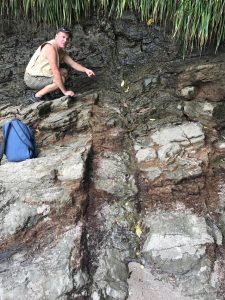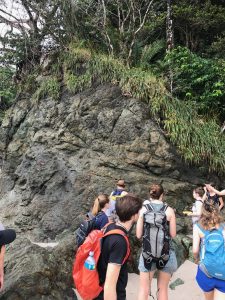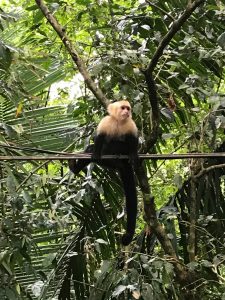Day 8: Sunday, 1/14/2018
by Matt Barr (17.5′) and Bryce Belanger (19′)
Following a glorious Saturday of playoff football (en Español), we set out to Volcano Arenal Sunday morning from our Airbnb in La Fortuna. Linking back up with Carlos, and his colleague Gino (a volcanologist), we drove to the base of the volcano, donned our hard hats, and hopped the fence to begin the hike up the now closed road. Carlos lead the way, slashing through biological distractions and trying to keep us on the right path.
In 1968 Arenal began its most recent eruptive phase, producing some sort of eruption every day for 42 years. Although still active, the 7,000 year volcano hasn’t produced any eruptive material since 2010.
We scaled the western slope, between a 1968 lava flow and a 1993 lava flow, until the volcano was too steep to go any further. On our way back down we climbed on top of the 1993 flow, a blocky basaltic andesite, only a few years older than we are. We busted out the rock hammers and smashed the hell out of it, exposing some clean faces and beautiful clinopyroxene and plagioclase crystals. After some discussion, some photos, and some jokes, we trekked back down the volcano to have some lunch.
Stop 2 was a dam (daaammmnnnn!). Unlike the last hydroelectric project we visited, this one was made of gravel and boulders, and it trapped runoff instead of blocking a river. The reservoir is actually called Lake Arenal, and it’s a popular tourist destination.
Following the hydrological excursion, we pulled off on the side of the road, slashed through some plants and cleaned off the face of a road cut, exposing layers of lapilli, paleosols, ash, and debris flow. We sampled the lapilli for some future analyses back in the laboratory in Middlebury, Vermont—the land of winter.
Our final stop of the day was another Arenal lava flow, some 500 years old, with clinopyroxene the size of my pinky nail. We smashed it into bitesize pieces and everyone got some. People pulled over to see what all the commotion was and we told them we found cool rocks and they didn’t care.
Tomorrow we’re headed to a crater lake. J-Term is pretty fun.
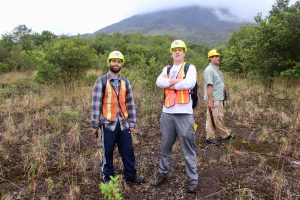
The two handsome authors in front of Volcano Arenal (ft. Carlos).
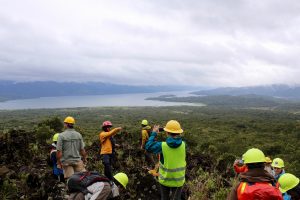
View of Lake Arenal from on top of the 1993 lava flow.
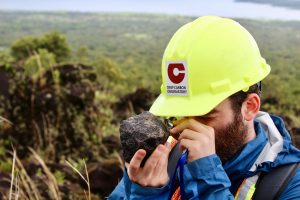
Geologist Matt Barr looks at basaltic andesite on the west flank of Volcano Arenal.
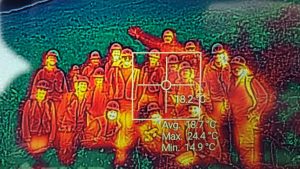
Infrared shot of the group on Volcano Arenal.
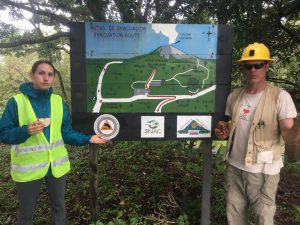
Professors Pete Ryan and Kristina Walowski pose with sandwiches next to an evacuation sign.
